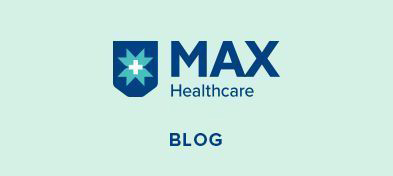
To Book an Appointment
Call Us+91 92688 80303Parkinson's Disease: A Comparative Analysis of Medical and Surgical Management Strategies
By Dr. Namita Kaul in Neurology
Apr 19 , 2024 | 2 min read
Your Clap has been added.
Thanks for your consideration
Share
Share Link has been copied to the clipboard.
Here is the link https://www.maxhealthcare.in/blogs/parkinsons-disease-medical-vs-surgical-management
Parkinson's disease is not just a movement-related condition- it affects multiple systems at once. We often consider older adults with shaky hands to have Parkinson's disease- while it is one of the symptoms, it's not the only one.
Parkinson's disease is a progressive neurological condition that impacts movement, behaviour and mental health. Some primary symptoms of Parkinson's include:
- Tremors, which refer to the involuntary shaking that starts in the hands, fingers, or even limbs, when at rest.
- Slowness of movement, called bradykinesia, can make simple tasks difficult and time-consuming.
- Stiffness and inflexibility of muscles, also known as muscle rigidity, can cause pain and impair movement.
- Postural instabilities, like impaired balance and coordination, can make it hard to stay in an upright posture and increase the risk of falls as well.
Some non-motor, secondary symptoms of Parkinson's include:
- Cognitive changes, like having difficulty with memory, concentration, and problem-solving-related tasks.
- Mood disorders like depression, anxiety, and apathy are common in people with Parkinson's disease.
- Sleep disturbances like insomnia, restless legs syndrome, and REM sleep behavior disorder.
- Problems with swallowing, blood pressure regulation, sweating, digestion, and bladder control, also known as autonomic dysfunctions.
- Slurred speech, difficulty speaking clearly, and swallowing problems may occur increasingly as the disease progresses.
Research is not fully sure what causes Parkinson's, but it could be a mix of genetic and environmental factors.
Understanding Management Options
It is essential to note that Parkinson's disease does not have a cure. However, some things can be done to improve its symptoms and ease daily functioning, leading to improvement in the quality of life.
Most treatment options are conservative, usually starting with an overhaul in nutrition, exercise, and lifestyle habits. Changes in these three facets can help both motor and non-motor symptoms immensely. Adding medications to this can significantly improve the symptomatology.
However, medicines should be added & increased gradually for better tolerance. Additionally, it is important to note that medications for Parkinson's disease must not be taken with food (especially a protein-rich diet) as it affects the absorption & efficacy of the medicine.
Consequently, it is extremely beneficial for those with Parkinsons to work hand in hand with a physiotherapist, who can usually help effectively with movement-related issues. Occupational therapy and speech therapy are common approaches that help with staying active and being able to carry out daily activities.
There are surgical options available as well, but those are usually reserved for individuals who have sought relief with conservative treatments like medications but are facing side effects and are over the age of 40. Surgical options include deep brain stimulation (DBS), radiofrequency ablation, and focused ultrasound, to name a few. These all work by targeting specific areas of the brain that are associated with Parkinson's disease symptoms and modulating neural activity to improve motor symptoms such as tremors, rigidity, and bradykinesia.
In conclusion, while Parkinson's disease presents primarily as a movement disorder, its impact extends beyond motor symptoms to affect various aspects of daily life. The management of Parkinson's disease is a holistic approach and is not restricted only to medicine—it includes changing lifestyle habits and finding new ways to modify life for a brighter, more vibrant existence filled with hope and resilience.

Written and Verified by:

Related Blogs

Oct 27 , 2020 | 3 min read

Dr. Amit Gupta In Spine Surgery , Neurology
Nov 07 , 2020 | 2 min read
Most read Blogs
Get a Call Back
Related Blogs

Oct 27 , 2020 | 3 min read

Dr. Amit Gupta In Spine Surgery , Neurology
Nov 07 , 2020 | 2 min read
Most read Blogs
Other Blogs
Specialist in Location
- Best Neurologists in Saket
- Best Neurologists in Gurgaon
- Best Neurologists in Delhi
- Best Neurologists in India
- Best Neurologists in Ghaziabad
- Best Neurologists in Shalimar Bagh
- Best Neurologists in Patparganj
- Best Neurologists in Mohali
- Best Neurologists in Dehradun
- Best Neurologists in Bathinda
- Best Neurologists in Panchsheel Park
- Best Neurologists in Noida
- Best Neurologist in Nagpur
- Best Neurologist in Lucknow
- Best Neurologists in Dwarka
- Best Neurologist in Pusa Road
- Best Neurologist in Vile Parle, Mumbai
- Best Neurologists in Sector 128, Noida
- CAR T-Cell Therapy
- Chemotherapy
- LVAD
- Robotic Heart Surgery
- Kidney Transplant
- The Da Vinci Xi Robotic System
- Lung Transplant
- Bone Marrow Transplant (BMT)
- HIPEC
- Valvular Heart Surgery
- Coronary Artery Bypass Grafting (CABG)
- Knee Replacement Surgery
- ECMO
- Bariatric Surgery
- Biopsies / FNAC And Catheter Drainages
- Cochlear Implant
- More...





